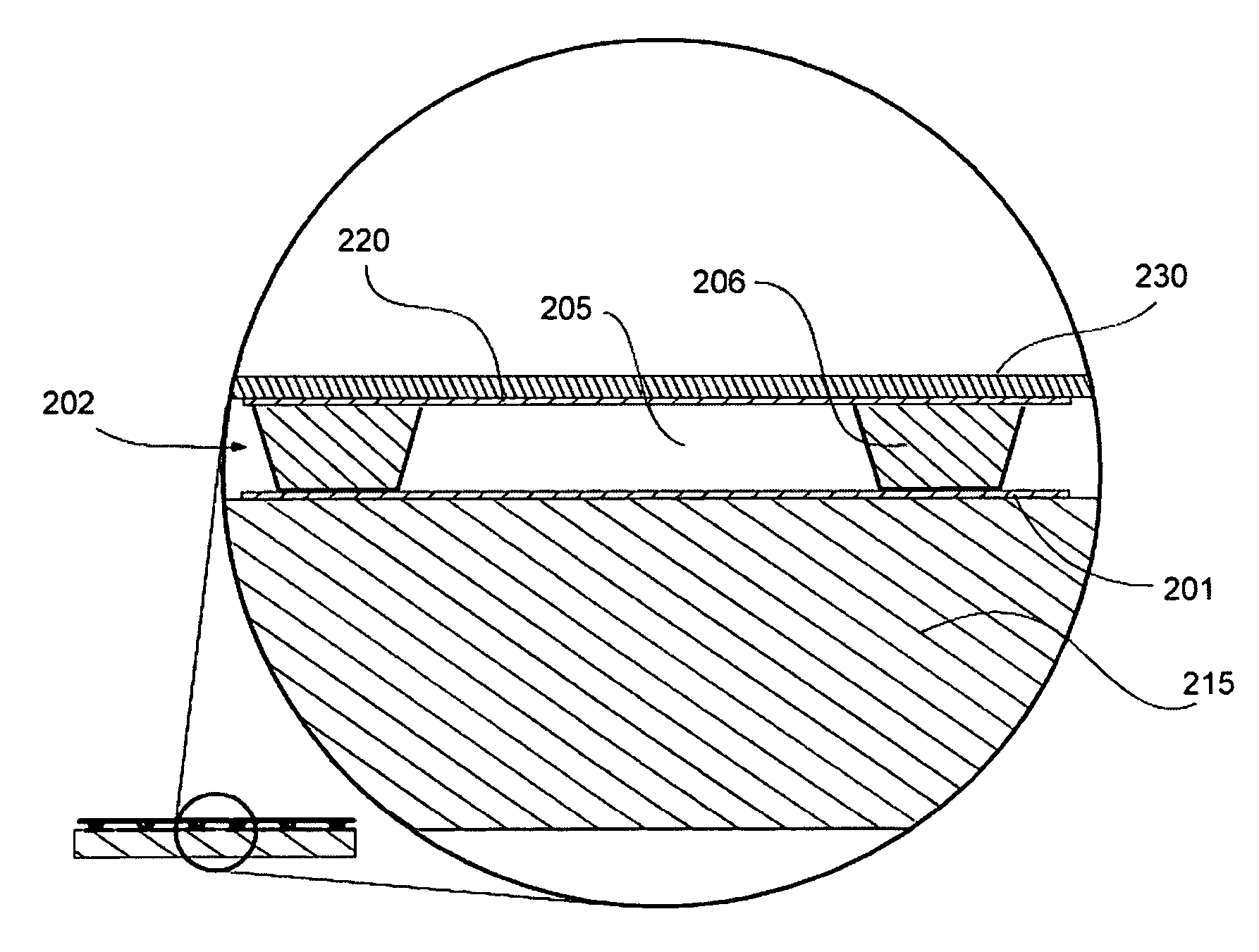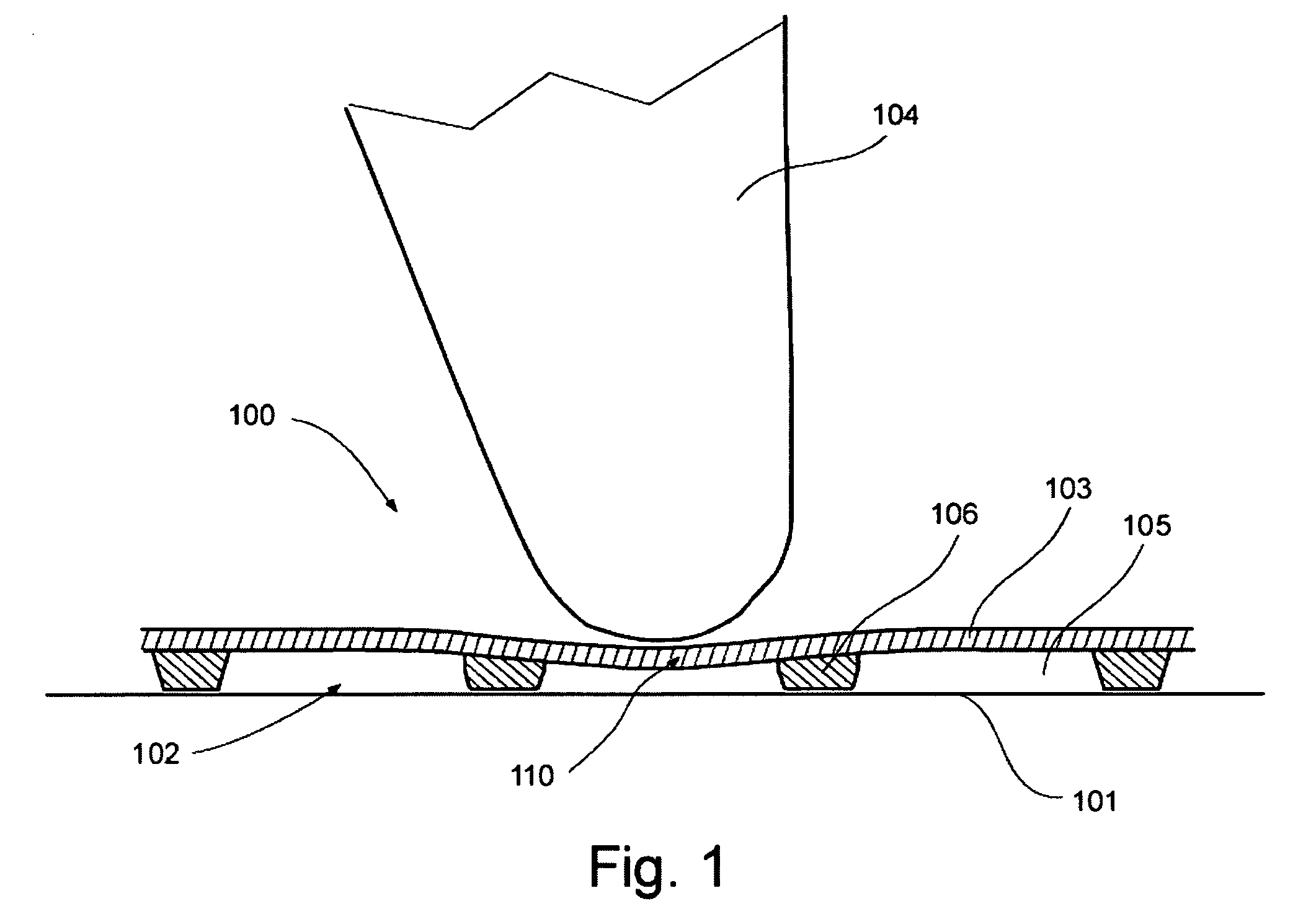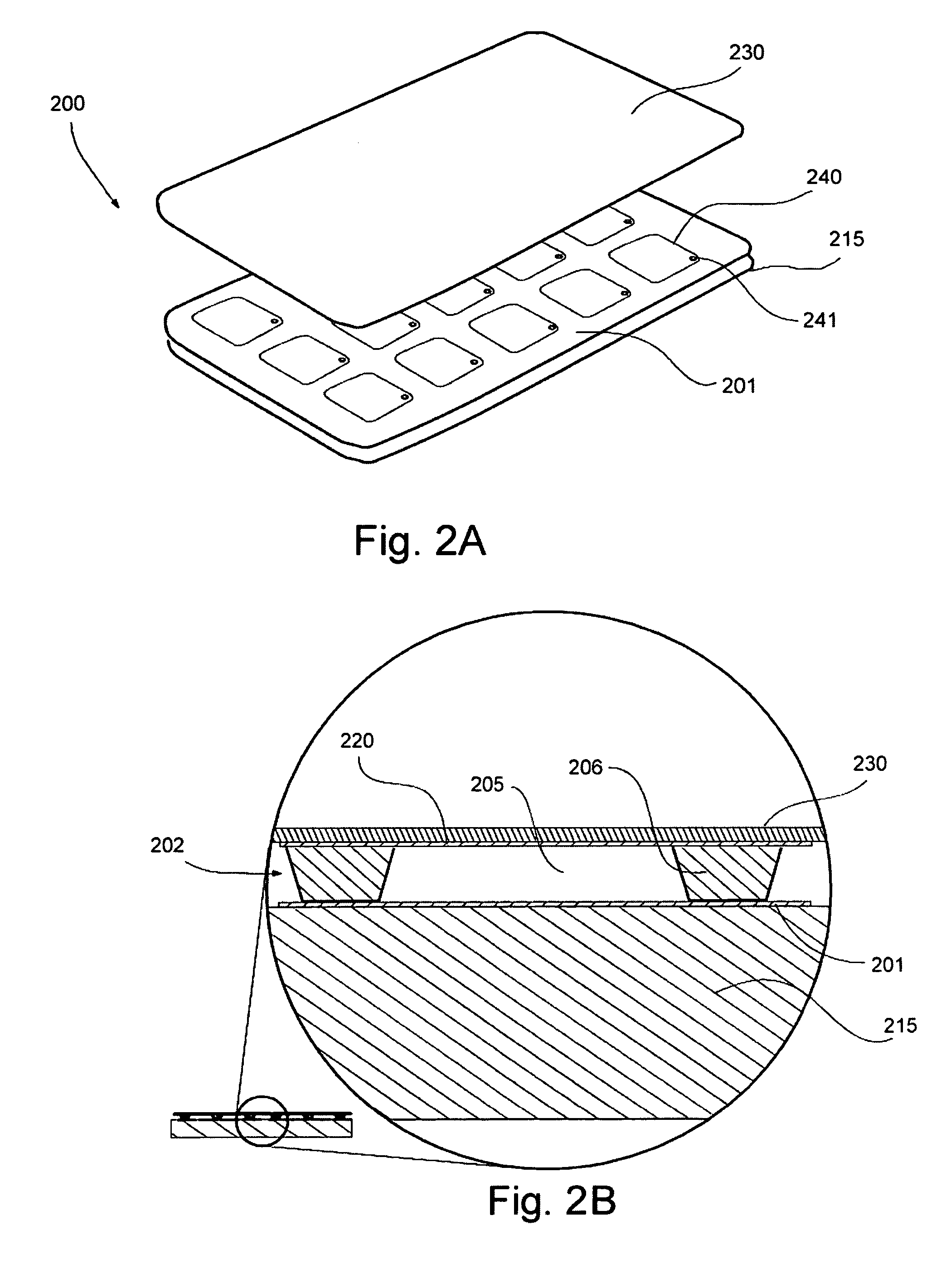Reconfigurable tactile sensor input device
a tactile sensor and input device technology, applied in the field of reconfigurable input devices, can solve the problems of difficult handling, increased production cost, and increased labor intensity, and achieve the effect of easy integration of tactile sensors and less production cos
- Summary
- Abstract
- Description
- Claims
- Application Information
AI Technical Summary
Benefits of technology
Problems solved by technology
Method used
Image
Examples
first embodiment
[0047]FIGS. 2A and 2B illustrate a commercially useful design of the input device 200 of the present invention. It consists of a rigid substrate 215 onto which a first layer of electrodes 201 are mounted. The electrode layer 201 can be formed using any one of a variety of standard manufacturing methods, including PCB etching, sputtered or vacuum metal deposition, or conductive ink printing methods. In this case, the first layer of electrodes is a sensing layer having discrete “button”-type electrodes 240 spaced apart throughout the sensor and supplied with electrical connection means comprising individual electrical connections (not shown) attached to the electrodes at connection points 241.
[0048]To improve electrical coupling for scrolling and other similar functions, an optional interweaving overlap between electrodes can be implemented as shown in examples on FIG. 7. FIG. 7A shows electrode design without overlap. FIGS. 7B through D show an ever increasing degree of interweaving ...
third embodiment
[0057]A full matrix of electrodes is shown as the invention on FIG. 4. Made using the same principles as the previous embodiments, this design 400 replaces discrete buttons with electrode strips 440 on the first sensing electrode layer. These strips are each equipped with an electrical connection point 441. Another set of electrode strips 421 is arranged on the second electrode layer in a direction perpendicular to the sensing electrode strips. Each upper electrode strip is also equipped with an electrical connection 422. A full electrode matrix is therefore arranged with the total number of wires needed to control the matrix being the sum of horizontal and vertical strips. In the example of the device shown on FIGS. 4, the total number of control wires is 10 for the bottom layer plus 6 for the top, totaling 16 for a 10×6 sensor array. The high spatial resolution of this matrix formed by the intersection of 421 and 440 provides for a virtually unlimited number of input device config...
fourth embodiment
[0058]the input device of the present invention is shown on FIG. 5. It has two further improvements in comparison with the previous versions: an IC 570 adapted to measure the sensor pressure values and optionally mounted nearby on the same substrate 515 as the sensor, and a flexible display means 560 overlaying the basic sensor.
[0059]The use of a commercially-available IC mounted together with the sensor allows for the mass production of the input device of the invention at an economical price. To be most useful for the purposes of the invention, the IC should be mixed-signal, allowing for both analog and digital input and output, and be capable of measuring capacitance over the entire range of electrodes, be they buttons, sliders, electrode matrices, etc. By incorporating a proprietary or standard digital interface, the IC would allow the sensor to act as a peripheral device to a host processor. This interface could take the form of any of a number of standard digital serial protoc...
PUM
 Login to View More
Login to View More Abstract
Description
Claims
Application Information
 Login to View More
Login to View More - R&D
- Intellectual Property
- Life Sciences
- Materials
- Tech Scout
- Unparalleled Data Quality
- Higher Quality Content
- 60% Fewer Hallucinations
Browse by: Latest US Patents, China's latest patents, Technical Efficacy Thesaurus, Application Domain, Technology Topic, Popular Technical Reports.
© 2025 PatSnap. All rights reserved.Legal|Privacy policy|Modern Slavery Act Transparency Statement|Sitemap|About US| Contact US: help@patsnap.com



